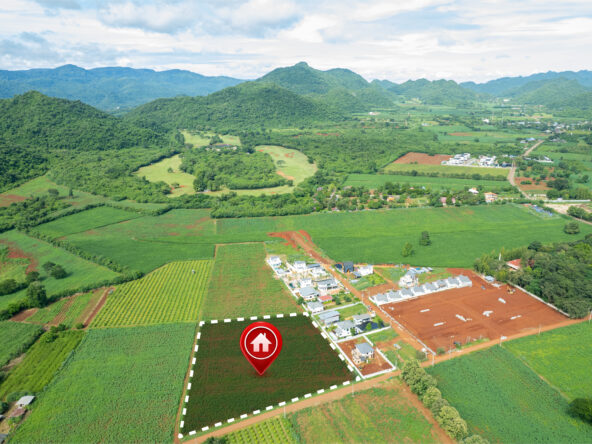Hey there! Ready to take a journey through time and land? In this blog post, we’re diving deep into the world of historical land data and how it’s like having a crystal ball for predicting future trends. Buckle up, and let’s explore the exciting world where past, present, and future collide!
Why Historical Land Data Rocks:
So, what’s the big deal with digging into the past when it comes to land? Well, imagine this – historical land data is like a treasure chest full of stories about how our surroundings have evolved. Whether it’s the bustling cityscape, changing farmlands, or the secrets hidden in the natural world, historical land data spills the beans on what happened before and gives us a sneak peek into what might happen next.
Let’s kick things off by appreciating why historical land data is our go-to guide. Think of it as a time-traveling detective, revealing patterns, shifts, and the big players that shaped the land. We’re not just talking about the stuff you read in textbooks – this is the real, on-the-ground (or should we say, on-the-land) scoop that helps us make smart decisions for today and tomorrow.
The Scoop on Data Collection:
Now, let’s talk about where we get all this juicy historical land data. It’s not just a bunch of old papers gathering dust – we’ve got high-tech tools and some cool methods up our sleeves. From ancient government records to space-age satellite imagery, the range of sources today is mind-blowing. We’re like detectives with a whole array of gadgets to uncover the mysteries of land history.
First up, we’ve got the OG sources – government records. We’re talking land surveys, property deeds, and zoning maps. They’re like the history books of land, showing us who owned what and how the rules of the land game have changed. But hold up, we’re not stuck in the past. Thanks to modern tech, we’ve got remote sensing and satellite imagery giving us a bird’s eye view of how things have changed. It’s like having a time machine that lets us see the landscape evolve right from our screens.
Getting Down to the Nitty-Gritty of Land Analysis:
Okay, enough with the formalities – let’s dive into the fun part. We’re not just staring at old maps and photos here; we’re throwing some serious analysis into the mix. It’s like CSI, but for land. We’ve got statistical and machine learning wizards conjuring up magic to make sense of all that historical land data.
Imagine this: a land-use wizard sifting through the data, spotting trends, and predicting the future. It’s not just crystal ball stuff; it’s backed by numbers and algorithms. We’re not saying it’s predicting the next blockbuster movie, but it’s darn close when it comes to forecasting trends in how we use land.
Taking a Trip Down Memory Lane – Historical Trends in Land Use:
Now that we’ve got our detective hats on and our data-crunching tools ready, let’s stroll down memory lane. Historical land data isn’t just numbers; it’s a story waiting to be told. We’re talking about how cities expanded, farmlands transformed, and nature adapted over time. It’s like a time-lapse of the Earth’s makeover, and historical trends show us the stars of the show.
Ever wondered why your city looks the way it does? Historical land data spills the tea on how urban landscapes evolved – from quaint little towns to the sprawling metropolises we know today. And don’t get us started on farmlands; they’ve got their own drama going on, with changing agricultural practices and the dance between crops and communities.
The Thrills and Chills of Predicting Future Trends:
Alright, we’ve mastered the art of analyzing the past. But what about predicting the future? This is where it gets exciting – predicting trends like a land soothsayer. We’ve got the inside scoop on emerging trends in land use, and it’s not just wild guesses. It’s based on the patterns we’ve uncovered, the data we’ve crunched, and a touch of magic (okay, maybe not magic, but you get the drift).
Think of it as gazing into a crystal ball, but instead of misty visions, we’ve got solid predictions. What’s the next big thing in land use? Are we heading towards eco-friendly cities, smarter agriculture, or a resurgence of wild spaces? Historical land data holds the clues, and predicting the future trends is our way of being ahead of the curve.
Real Talk: Challenges and Limitations:
But hey, it’s not all sunshine and rainbows in the land of historical data. We’ve got our fair share of challenges. Sometimes the data is like an ancient map – faded, torn, and missing key details. And predicting the future? Well, let’s just say even the best land wizards can’t predict every twist and turn.
Challenges and Limitations: Real Talk, No Magic Wand Here!
So, we’ve got our cool gadgets, data detectives, and a dash of prediction magic. But hold on – it’s not all smooth sailing. Let’s get real about the hurdles we face in the world of historical land data.
First off, the data can be a bit like deciphering an ancient treasure map – you’re not always sure if “X marks the spot” or if it’s just a doodle. Some records might be missing, faded, or downright cryptic. Imagine trying to piece together the history of a city when half the street names are missing, and the ink has faded into oblivion. It’s a challenge, but that’s the thrill of the hunt!
And let’s talk about predicting the future. We’re good, but we’re not wizards. The crystal ball sometimes gets a bit cloudy. Unexpected events, changing human behaviors, or the occasional wild card – predicting every twist and turn in the land story is a challenge. It’s like trying to predict the plot of a blockbuster movie – sure, you can guess some parts, but the unexpected plot twists keep you on the edge of your seat.
Case Studies: Where the Rubber Meets the Road:
Enough with the challenges; let’s dive into the good stuff – real-world examples where historical land data analysis hit the bullseye. These are like our success stories, where the predictions weren’t just accurate; they were downright impressive.
Ever heard of a city that revamped its zoning laws based on historical land data, leading to a more vibrant downtown? Or how about an agricultural community that embraced new practices, increasing productivity and sustainability? These case studies aren’t just tales; they’re the real deal, showing us the impact of historical land data on decision-making.
Future Trends and Predictions: The Exciting Part!
Now, let’s get to the juicy part – what’s next? What can we expect in the ever-evolving world of land use? Picture this: emerging trends that might reshape our cities, transform agriculture, or bring back the balance between humans and nature. It’s not just speculation; it’s a sneak peek into the land trends of tomorrow.
From eco-friendly urban planning to high-tech agriculture, the future is brimming with possibilities. We’re not fortune-tellers, but with historical land data as our guide, we can make some educated guesses about the exciting directions land use might take. Join us on this journey into the future, where the landscapes we know today might just undergo a remarkable makeover.
Implications for Decision-Making: Putting It All Into Action:
Okay, we’ve had our fun exploring historical land data, tackling challenges, and predicting the future. But let’s not forget the real reason we’re on this adventure – to make better decisions. How does all this analysis impact the way we shape our cities, manage our farmlands, and protect our natural spaces?
In this section, we’re getting down to business. We’re talking about how insights from historical land data can influence decision-makers – the policymakers, urban planners, and community leaders who hold the keys to shaping our environment. From crafting smarter zoning laws to making informed choices about sustainable agriculture, historical land data isn’t just data; it’s a guidebook for decision-makers navigating the ever-changing landscape.
Conclusion: Because Every Adventure Has an End (or Does It?):
As we wrap up this rollercoaster ride through historical land data, predictions, and decision-making, take a moment to appreciate the landscape around you. Whether you’re in the heart of a bustling city, surrounded by farmlands, or nestled in the embrace of nature, remember that the land beneath your feet tells a story – a story of the past, present, and the exciting possibilities of the future.
So, here’s to the data detectives, the prediction wizards, and the decision-makers – may your journey through land data be filled with discoveries, challenges, and a touch of magic. After all, the adventure doesn’t truly end; it just morphs into the next chapter of the ever-evolving story of our land.




